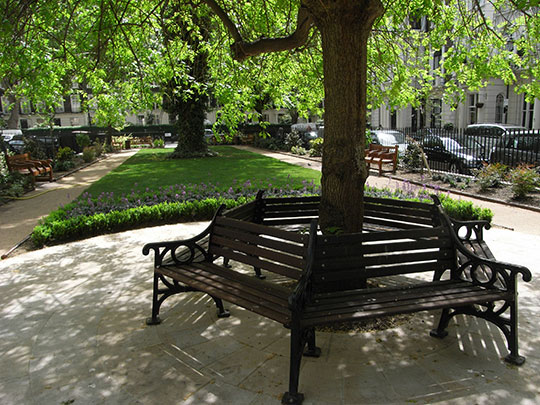
A 19th Century London Garden Square
Squares are one of the defining features of London. Like other European cities, London has its grand civic spaces, but no other city has developed the garden square in quite the same way.
London squares are different because they were built for people to live in. The layout of Georgian and Victorian squares created an ordered, spacious arrangement of streets and leafy open spaces which has made an enduring contribution to the quality of life in London.
Today, London's squares are a vital part of the city's fabric: a focus for local communities, attractive to tourists, and pleasant places for Londoners in which to live, work and relax. They can also be a haven for wildlife, important links in the green chain between the city's parks and back gardens, and occasional oases in built-up areas.
Talbot Square is a three-sided garden square open on the fourth side to Sussex Gardens. It was laid out after 1842 on the site of the former Lower Reservoir of the Grand Junction Canal Company, probably to the design of George Gutch. The square's central garden was at that time reserved for the use of occupants of the surrounding houses, who were jointly responsible for its maintenance.

During the war the residents of Talbot Square contributed the iron railings of their garden to the government as desperately-needed raw materials; a simple chain link fence was installed to replace them.
In 2008/09 the garden was improved extensively by Westminster City Council, including re-paving the central circular feature, various planting improvements and York stone paving with seating and access to the 2 main resin bound paths that run the length of the gardens. There are two notable London plane trees dating from the early layout, and other trees include a weeping ash that has a new bench around it surrounded by circular paving.
As part of the improvements, the main entrance onto Sussex Gardens had a metalwork arch designed, and traditional iron railings, missing since the residents' generous contribution to the war effort, were finally reinstated around the full length of the garden.
